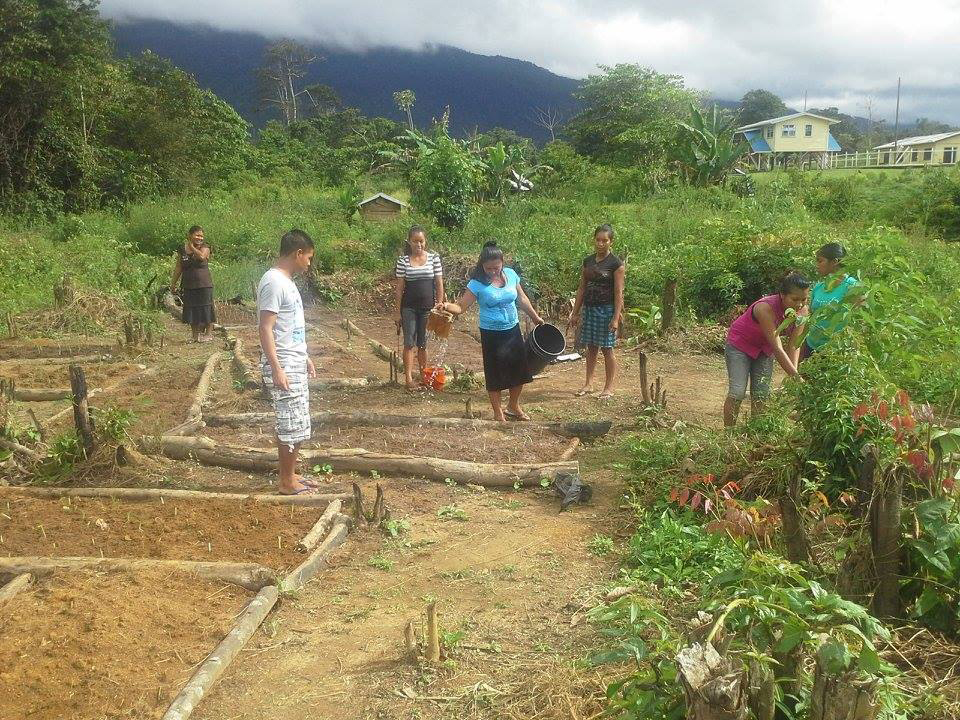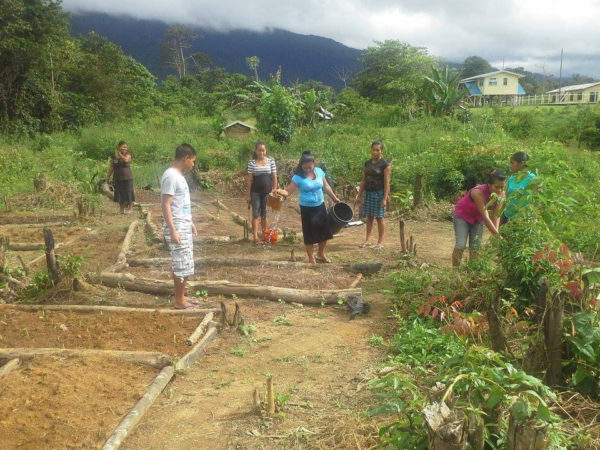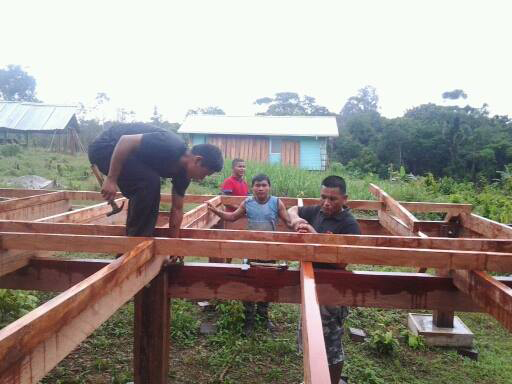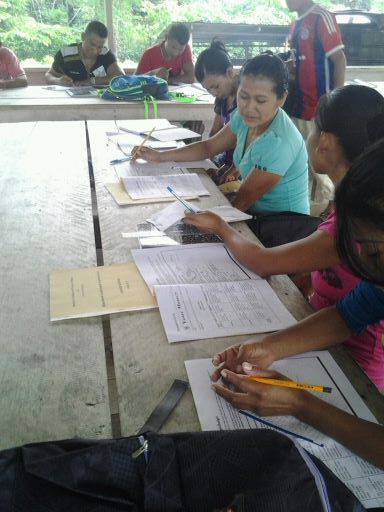One hundred and six indigenous villages and 2,000 of their youth in Guyana’s hinterland have been able to benefit from the Hinterland Employment Youth Service (HEYS) programme since it began almost a year ago.
Launched last October in the Region Eight community of Paramakatoi, HEYS replaced the controversial Youth Entrepreneurial and Apprenticeship Programme (YEAP) which was said to have been used by the People’s Progressive Party as a political tool in the hinterland.
In an interview with Stabroek News in January, Minister within the Ministry of Indigenous Peoples’ Affairs Valarie Garrido-Lowe disclosed plans to offer extensive skills training to hinterland youth through HEYS. The goal at that time was to take the programme to 100 indigenous villages across the country with the aid of allocations made in the 2016 budget.
Sitting down for a follow-up interview on Tuesday, more than six months after the ministry was awarded $977 million for the development of the HEYS programme, the minister was pleased to say that her team at the ministry had met its target.
Offering some details, she related that in excess of $50 million had already been spent on the programme, before going on to highlight the training of ‘Master Trainers’ which was done in March.
Tasked with teaching the village facilitators effective ways of delivering the programme to the youth participating in HEYS, this group was dispatched different villages to conduct five-day intensive training sessions.
The feedback from this was tremendous, Garrido-Lowe said, as it was evident that persons were very much interested in being part of the programme. In some instances, master trainers were training 65 facilitators at a time, as was the case in the Moruca Sub-Region, Region One, earlier this month.
At the end of the training sessions, the newly trained facilitators would have returned to their respective villages to conduct training under the HEYS programme.
Alluding to the fact that responsibility for the HEYS programme falls under her watchful eye, Garrido-Lowe explained that she also asked that monitors be implemented to not only prepare detailed, monthly progress reports for the benefit of the ministry, but to also lend assistance to the facilitators if the need arises.
“We want to ensure that the programme goes according to plan. We want to ensure that the curriculum is delivered properly, just in case the facilitators need a little extra help, they have the monitors,” the minister said.
Additionally, when time and finances permit, the minister related, she too visits the villages to ensure that everything is running as it should.
“Remember this programme is one that I conceived and I don’t want it to fail; so every once in a while, when time and finance permits I will go and say hello and see what’s going on. I don’t have to do it really, we have the monitors for that but I like to do it once in a while because I feel that’s the only way I can be kept fully up to date,” she added.
Garrido-Lowe expressed happiness at seeing the first group of HEYS participants from Paramakatoi already putting their acquired knowledge to practical use by being suppliers of newly constructed furniture to the dormitory at the Paramakatoi Secondary School.
“We had an independence sale in Paramakatoi where the women who followed garment construction were able to sell all their products at reasonable prices so that they can garner money to purchase more materials. They are working,” she added.
Beaming with pride, the junior minister also highlighted HEYS participants in Kato Village, Region 8 and Santa Cruz, Region 1, where they have been able to experience onsite training in the field of electrical installation and general carpentry under the guidance of both facilitators and contractors.
“This is the whole thing about the programme, they get to experience on-site training and that’s how they are going to get noticed.
So the whole thing about the project is being able to allow the youth to practice within their community,” she said.
Other instances include youth from Moruca who decided to put their skills to use for the annual Moruca Expo which was held over the weekend.
As the programme continues to progress, there has also been several new additions to the skills being offered, these include auto mechanics, information technology and massage therapy.
Commenting on the decision to follow up on massage therapy as a skill set offered by HEYS, the minister explained that while she was skeptical at first, she later supported the new venture after finding out that the facilitator had been a trained masseuse at the St Joseph Mercy Hospital.
“In Moruca, one young lady convinced me that the group should choose massage. It’s more of a therapeutic something that they ought to learn, so I allowed her to do it… I believe such skills can be assets in the medical field in those communities where physiotherapy is not really at play,” Garrido-Lowe said.
Additionally, she has hopes of adding sessions on proper tree felling techniques and Global Position System (GPS) mapping for those who live in proximity to areas where logging is carried out.
In her previous interview, the junior minister had spoken of trials faced in supplying the participants with their individual tools during their work sessions.
While this still continues to be a challenge, she explained that the ministry has taken the decision to procure the necessary tools to supply groups instead of individuals.
“Let’s say we have 20 students, we have them in groups of five or groups of four so if we have to buy hammers we buy four or five, if we have to buy saws, it’s the same thing; It’s the best way,” she said.
But while the programme is recognized mostly for its vocational training aspect, the minister reiterated that it also offers concentration studies on Math and English. This, she said, allows those who are desirous of sitting the Caribbean Secondary Education Certificate (CSEC) exams to receive the necessary guidance.
“Those who don’t want to stay in their village and want to go and further their studies, they have the opportunity also. If they want to take CXC English and Math, which are compulsory for the majority of jobs, they have one year of preparation with guidance from the facilitators to help them sit these exams,” she said.
Looking to the future, Garrido-Lowe related her plans to once again lobby for budget allocations that would allow her to meet the remaining 106 villages that have not yet been able to benefit from the HEYS programme.
“We have 212 indigenous villages, and right now we have reached 106; the other 106 are waiting impatiently so, our immediate goal as a ministry is convincing the government that this (HEYS) is something that can work; that is working so that we can be given another allocation to meet the remaining 106 villages in next year’s budget,” she said.
“I really see HEYS building capacity and I see the youth using it to earn and even going to higher studies.
I look forward to great things from this programme… seeing the youth of the Hinterland being more confident of themselves in getting jobs, or opening their own businesses.”









